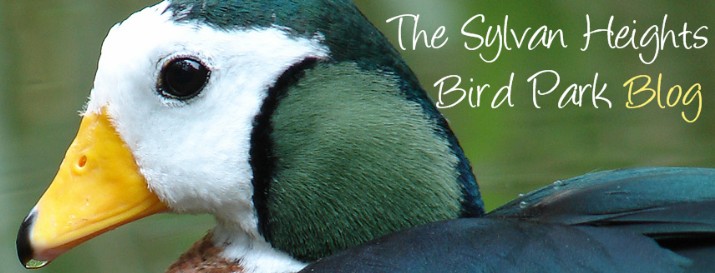One of our newest birds on exhibit is the Abyssinian ground hornbill (Bucorvus abyssinicus). A native of African grassland and savanna habitats, this bird is an omnivorous ground dweller that eats mostly rodents, frogs, and snakes, as well as insects, seeds, and fruits. The hornbill's long beak even allows it to catch and eat venomous snakes, while keeping the bird's body safely out of harm's way. And the long featherless legs help it to move quickly and easily through the grassy environment.
One of the things visitors notice first about our female Abyssinian is her incredibly long eyelashes. Unlike ours, these lashes are not hairs but actually modified feathers that serve the same purpose and protect the eyes from sand and dirt.
Our bird can easily be identified as a female by her blue wattle, or throat pouch. Males puff theirs out during courtship, but they are different from the females' in that their wattles also have a bright red color surrounding the blue.
Her exhibit is located between the African aviary and the spur-winged geese exhibit. Next time you are at the park, be sure to stop and say hello!


